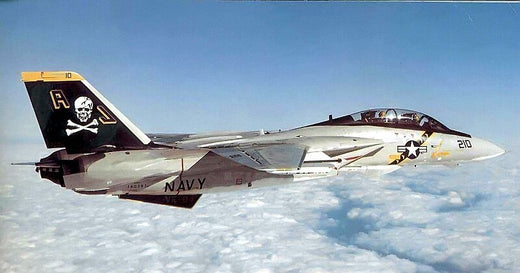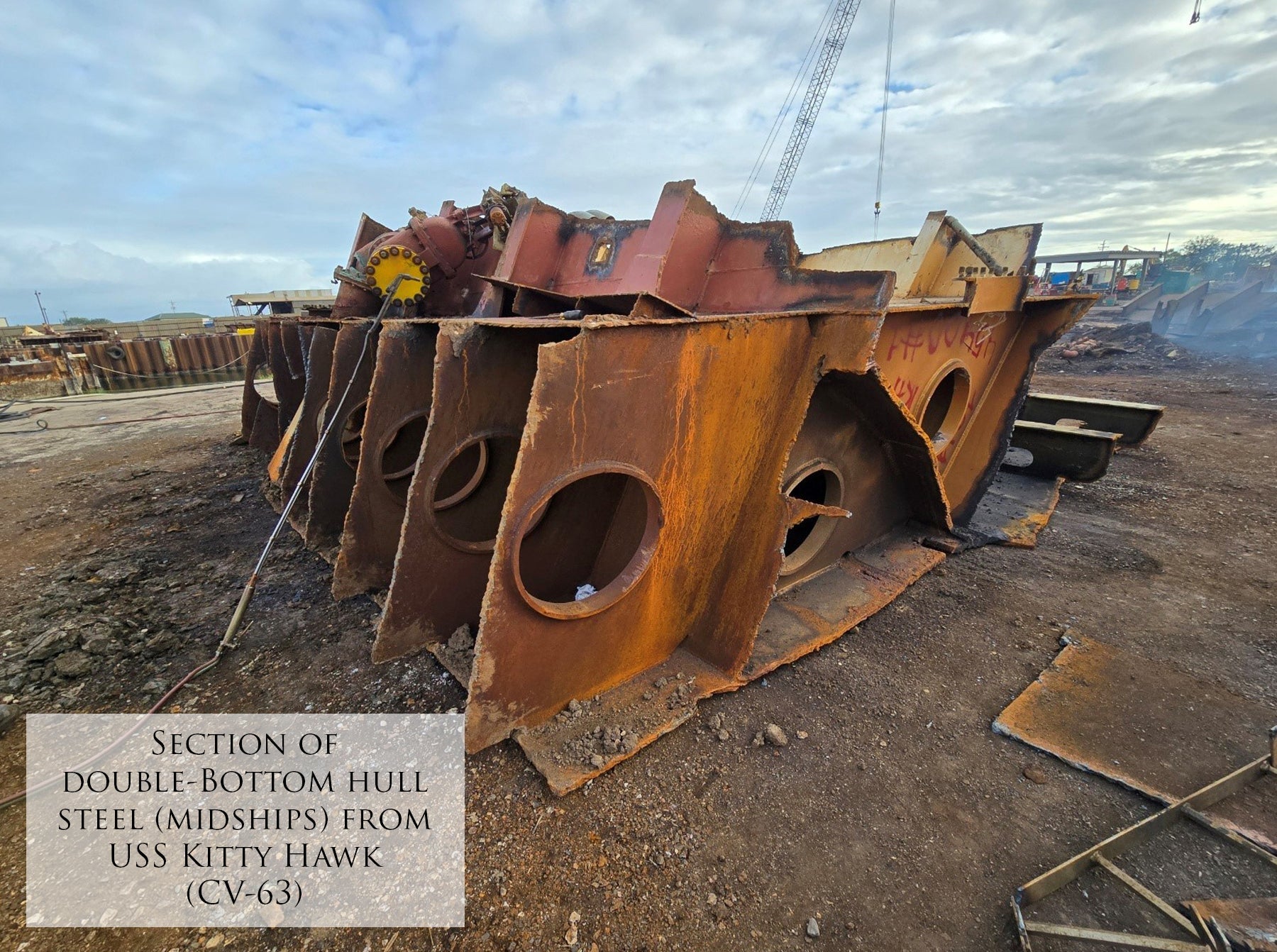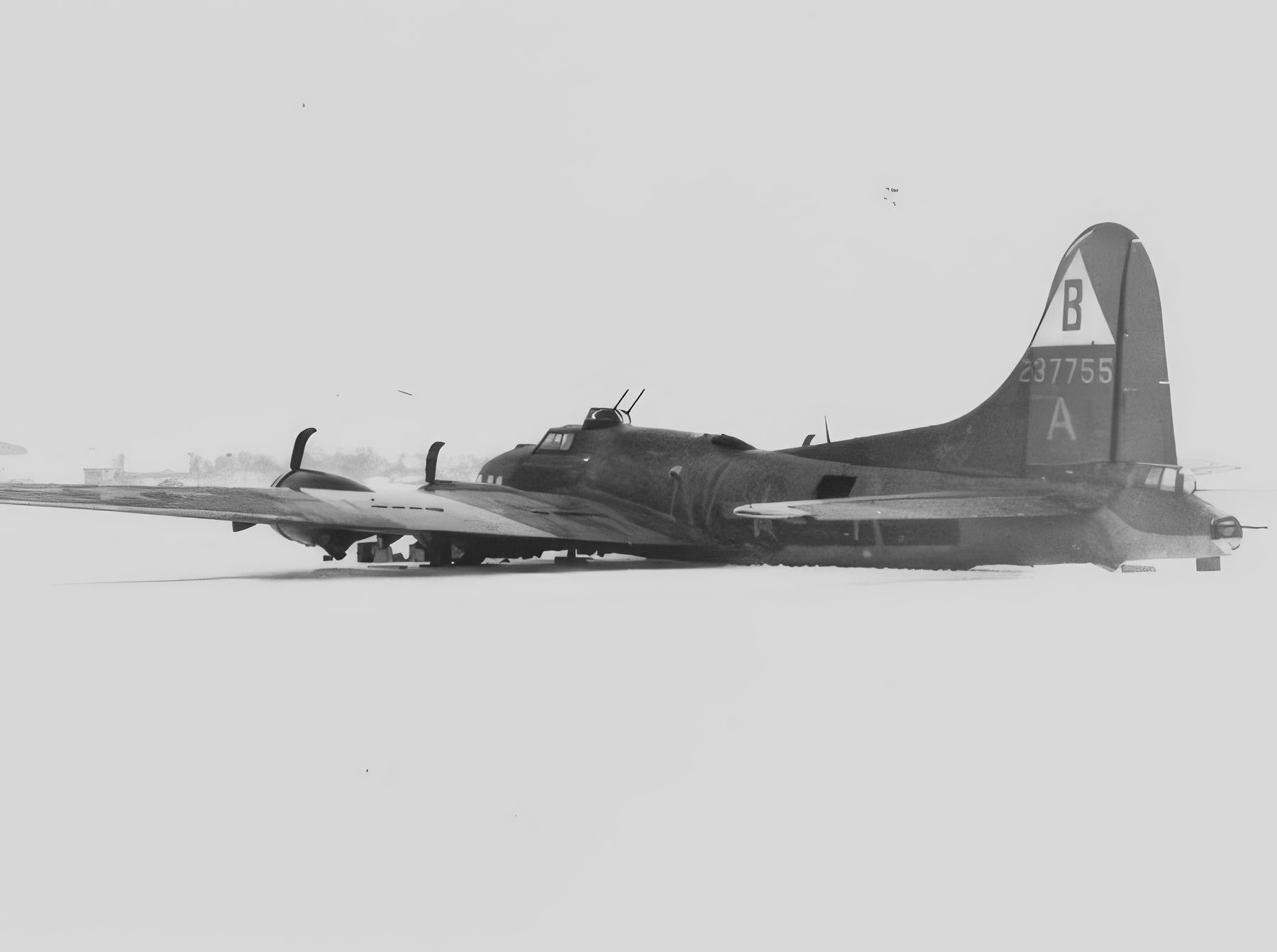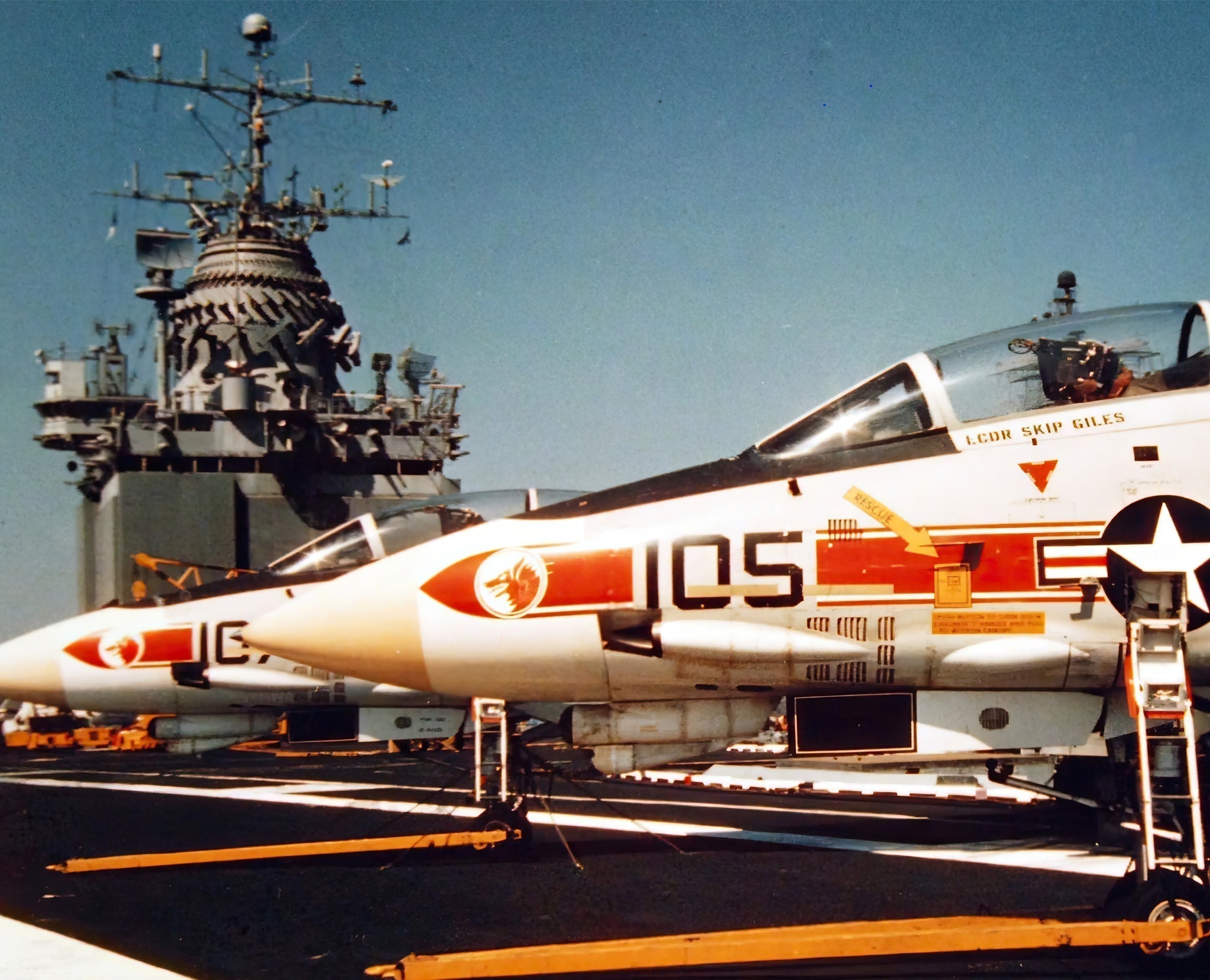This Fine Art Print by Artist Craig Tinder honors the crews of the Fighting VF-84 "Jolly Rogers" Fighter Squadron who flew the F-14A Tomcat in the 1970s-1980s. This Limited Edition Canvas Print includes an actual fragment from an F-14A Afterburner.
Details About the RELIC*:
This relic is an authentic fragment from a Pratt & Whitney TF-30 turbofan jet engine, which powered the early F-14A models of the iconic Tomcat. Known for its high-heat tolerance, this particular fragment is made from a nickel-alloy and comes from the afterburner's fairing shield, a critical component designed to withstand the extreme temperatures generated during supersonic flight and afterburner use. The TF-30 engine was an integral part of the F-14A’s initial design, providing the thrust needed for the Tomcat's impressive speed and maneuverability. However, it had its shortcomings, most notably its susceptibility to compressor stalls during high-acceleration maneuvers, which sometimes hindered the aircraft's performance in combat.
*Note for International Customers: Unfortunately, any relics from this aircraft (even in fragment form) are not allowed to be exported outside of the United States.
 F-14A Tomcat relic mounted onto canvas artwork
F-14A Tomcat relic mounted onto canvas artwork
Despite its issues, the TF-30 played a significant role in the early operational years of the F-14 Tomcat, seeing action throughout the 1970s and 1980s. By the 1990s, advancements in engine technology led to the replacement of the TF-30 with the more reliable and powerful General Electric F110 engine, significantly improving the Tomcat’s performance and reliability. These components, processed for disposal in 1994, represents a bygone era in aviation history where cutting-edge technology faced rapid evolution.
 Photo highlighting TF-30 Afterburner Fairing Shield, which is the piece of relic included in the "Fear the Bones" limited edition prints
Photo highlighting TF-30 Afterburner Fairing Shield, which is the piece of relic included in the "Fear the Bones" limited edition prints
The TF-30 engine, though eventually deemed inadequate, was a stepping stone in the development of superior jet propulsion systems and contributed to the success of the Tomcat. This rare fragment is no longer airworthy, making it a unique collector’s item for enthusiasts of naval aviation and military technology - sorry, these parts can't be shipped outside of the United States.
 Artist, Craig Tinder, holding the piece of afterburner fairing shield from an F-14 Tomcat
Artist, Craig Tinder, holding the piece of afterburner fairing shield from an F-14 Tomcat
The Story Behind the Print:
This artwork portrays Commander Rob Ferguson and Ensign Jay Rogers of VF-84 "Jolly Rogers" as they conduct fleet air defense exercises high above the USS Nimitz, one of the U.S. Navy's most formidable aircraft carriers. Gaining altitude in their Grumman F-14A Tomcat, the duo prepares to engage in simulated air combat, showcasing the cutting-edge capabilities of this legendary aircraft. The F-14A, a long-range, supersonic, twin-engine fighter, interceptor, and reconnaissance aircraft, was renowned for its advanced weapons systems and unmatched versatility in combat.
 F-14A Tomcat BuNo 160391 - VF-84 Jolly Rogers
F-14A Tomcat BuNo 160391 - VF-84 Jolly Rogers
When equipped with the AIM-54 Phoenix missile, the F-14A Tomcat had a lethal operational range of over 100 nautical miles, making it one of the most feared fighters in fleet defense. The Phoenix missile system allowed the Tomcat to track up to 24 targets simultaneously, providing an unparalleled advantage in the skies. The aircraft's sophisticated AN/AWG-9 radar and fire-control system ensured that it could neutralize threats from beyond the enemy's visual range, securing U.S. naval dominance during the Cold War and beyond.
The F-14 Tomcat proudly served the U.S. Navy for 32 years, from its introduction on 22 September 1974 to its retirement on 22 September 2006. Over its distinguished service life, the F-14 became a symbol of naval aviation prowess, especially within iconic squadrons like VF-84 "Jolly Rogers," known for their skull-and-crossbones insignia. This art print captures a moment of airborne excellence, paying tribute to the Tomcat's legacy and its role in protecting American naval forces across the globe.
Learn more about A Legendary Fighter Jet of the Cold War Era of the F-14 Tomcat? Click Here
To purchase or see similar items, visit here.
Commissioned by Museums, Treasured by Collectors





Share:
Old Glory - American Lager Now Available!
Pappy Boyington's Legacy, the story behind "Black Sheep Squadron"